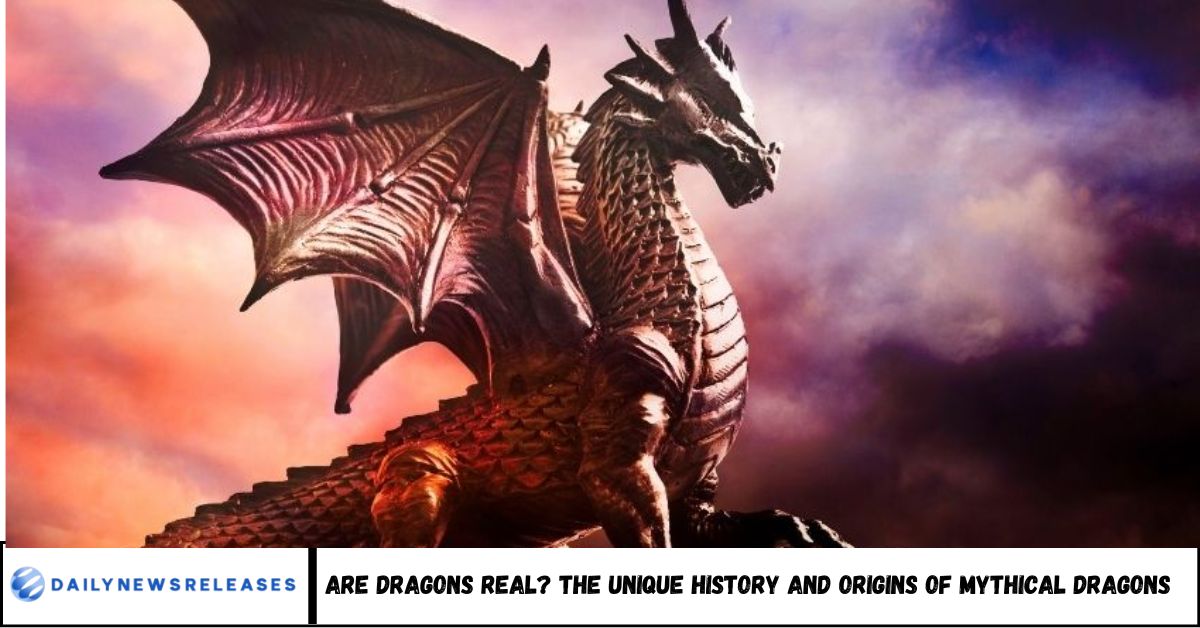Are Dragons Real? The Unique History and Origins of Mythical Dragons
Are dragons real? While no evidence supports their existence, dragons remain one of the most iconic mythical creatures across cultures. This article dives into the origins of dragon myths, their evolution in different civilizations, and the real-world inspirations behind these legends. Discover how history, fear, and imagination gave rise to creatures that continue to captivate us.
Dragons—winged, fire-breathing giants or wise, serpent-like protectors—have captured human imagination for centuries. But where did the idea of dragons really come from? Were they purely fictional, or did something in the real world inspire these mythical beasts?
In this article, we’ll journey into the ancient past to uncover the surprising origins of dragon myths. From misinterpreted fossils to deep-rooted cultural fears, we’ll explore how real-world discoveries and ancient beliefs combined to give rise to one of the most enduring creatures in mythology.
Introduction: Why Do So Many Cultures Believe in Dragons?
“Here be dragons.” This ominous phrase once marked the unknown edges of medieval maps—signifying danger, mystery, and the monstrous.
But why do nearly all ancient civilizations—from China to Europe—share similar dragon myths, despite oceans between them? Could there be a deeper truth behind these stories?
In this article, we’ll explore:
- The historical origins of dragon myths
- Cultural differences in how dragons are portrayed
- Possible real-world inspirations for dragons
- The psychological and symbolic meaning behind these creatures
- Whether there’s any scientific basis for their existence
What Is a Dragon? A Myth Defined Across Cultures
Though descriptions vary, most dragons share some common traits:
- Reptilian body
- Wings or the ability to fly
- Fire-breathing or venom-spitting
- Guardianship over treasure or sacred places
Eastern Dragons: Symbols of Wisdom and Power
- China, Japan, Korea, and Southeast Asia feature dragons as benevolent, wise, and divine.
- Often wingless but able to fly.
- Represent rain, fertility, and imperial authority.
- Example: The Chinese Lung is a key figure in folklore and festivals.
Western Dragons: Terrifying Beasts of Destruction
- European dragons are typically winged, fire-breathing creatures.
- Often portrayed as malevolent, greedy, and destructive.
- Example: In Norse and Medieval European myths, dragons guard treasure hoards (e.g., Smaug in The Hobbit).
Where Did Dragon Myths Originate?
1. Fossils Misinterpreted as Monsters
- Early people may have discovered dinosaur fossils, mistaking them for dragons.
- In China, fossilized remains of prehistoric animals have long been called “dragon bones.”
Fact: In 2000, paleontologist Adrienne Mayor proposed that ancient fossil discoveries inspired myths like griffins and dragons.
2. Fear of Real Predators
- Early humans feared large snakes, crocodiles, and big cats.
- These fears evolved into stories of larger-than-life beasts combining many traits.
3. Cultural Transmission of Legends
- Silk Road and ancient trade routes helped spread dragon lore.
- Myths morphed over time to fit each society’s values and fears.
Real Creatures That Inspired Dragon Myths
Some real animals may have sparked dragon stories:
- Komodo dragons – massive, venomous lizards from Indonesia.
- Crocodiles – found in rivers across Asia and Africa; powerful and deadly.
- Whales and sea serpents – misinterpreted by sailors as sea dragons.
- Pythons and cobras – worshipped or feared in various cultures.
2024 Stat: Over 65% of surveyed global adults (Pew Research) say they recognize dragons as symbolic of power, danger, or protection.
What Do Dragons Symbolize in Psychology and Myth?
Dragons can be interpreted as:
- Inner fears or chaos to be conquered (Jungian psychology)
- Guardians of knowledge or sacred truths
- Obstacles in the hero’s journey (common in myths and literature)
Their enduring presence in stories speaks to our deep psychological need for metaphors about good vs. evil, fear vs. courage.
Could Dragons Be Real? The Scientific Verdict
There is no scientific evidence that dragons ever existed as described in mythology. But that doesn’t mean their stories aren’t grounded in reality.
- No fossils of fire-breathing reptiles or flying dragons have ever been found.
- Biology cannot support creatures with both avian and reptilian traits in the sizes dragons are often depicted.
Yet, dragons live on—not in science, but in story, symbol, and imagination.
FAQs
1. Are dragons real?
No, dragons as described in mythology aren’t real. They’re legendary creatures inspired by fossils, fear, and imagination.
2. What cultures believe in dragons?
Nearly all ancient civilizations—including Chinese, Norse, Mesopotamian, and Aztec—had dragon-like creatures in myths.
3. Did dragons come from dinosaurs?
Possibly. Many myths may have stemmed from early discoveries of dinosaur fossils.
4. What’s the difference between Eastern and Western dragons?
Eastern dragons are wise and peaceful; Western dragons are aggressive and dangerous.
5. What animal is closest to a dragon?
Komodo dragons, large snakes, and crocodiles are considered real-world analogues.
6. Why are dragons still popular today?
They represent power, mystery, and transformation—making them timeless in stories, films, and games.
Conclusion
Dragons may not walk (or fly) among us, but their influence on human culture is undeniable. From ancient myths to modern media, dragons continue to evolve with us—mirroring our fears, ambitions, and imagination.
So no, dragons aren’t real in the physical sense—but they’re very real in the stories we tell and the symbols we cherish.

